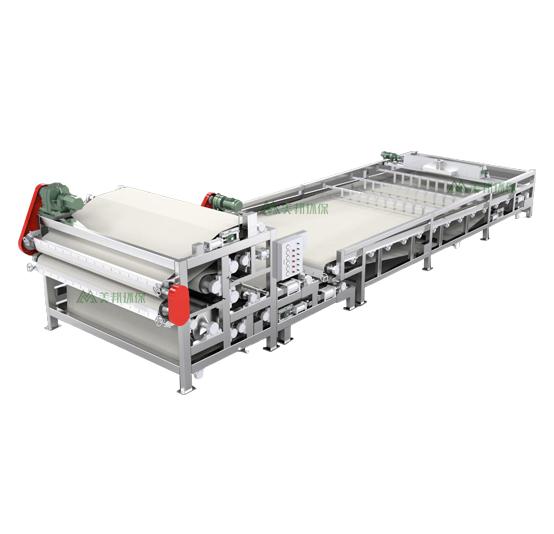How 13m Separate Type Sludge Filter Press Work
The 13m Separate Type Sludge Filter Press is a specialized filtration system designed for the dewatering and separation of sludge in various industrial and municipal applications. It utilizes a filter press mechanism to separate liquid from sludge, resulting in the formation of a filter cake. The working principle of this filter press can be described as follows:
1. Sludge Loading: The sludge, which is a mixture of solid particles and liquid, is fed into the filter press. The sludge may be pre-conditioned or treated beforehand to enhance its dewatering properties.
2. Filter Plates and Frames: The filter press consists of a series of vertically stacked filter plates and frames. These plates and frames are equipped with filter cloths or membranes, which act as the filtration medium.
3. Sludge Distribution: The sludge is evenly distributed between the filter plates, filling the space between them. This forms separate filtration chambers, with each chamber being created by a pair of adjacent filter plates and frames.
4. Filtration and Dewatering: Once the sludge is distributed, the filtration process begins. The filter press applies pressure to the sludge, typically using hydraulic or mechanical means. This pressure squeezes the sludge, forcing the liquid component (known as filtrate) to pass through the filter cloths or membranes, while the solid particles are retained as a filter cake.
5. Filtrate Collection: The filtrate from each filtration chamber flows through outlets in the filter plates and is collected in channels or trays below the filter press. The collected filtrate is then directed for further treatment or discharged, depending on the specific requirements.
6. Cake Discharge: Once the filtration process is complete, the filter cake is ready for discharge. The filter plates are separated to expose the filter cake, which can be manually removed or automatically discharged, depending on the design of the filter press. The discharged filter cake can be further processed, disposed of or reused, depending on its composition and the specific application.
7. Cleaning and Maintenance: After the filter cake is discharged, the filter cloths or membranes may need to be cleaned or replaced to maintain the filtration efficiency. The filter press may include mechanisms for cloth cleaning, such as sprays or brushes, to remove residual solids and debris.
The 13m Separate Type Sludge Filter Press offers advantages such as efficient dewatering, compact design, and ease of operation. It is commonly used in wastewater treatment plants, mining operations, and industrial facilities for the dewatering and volume reduction of sludge, allowing for more cost-effective sludge disposal or further processing.


